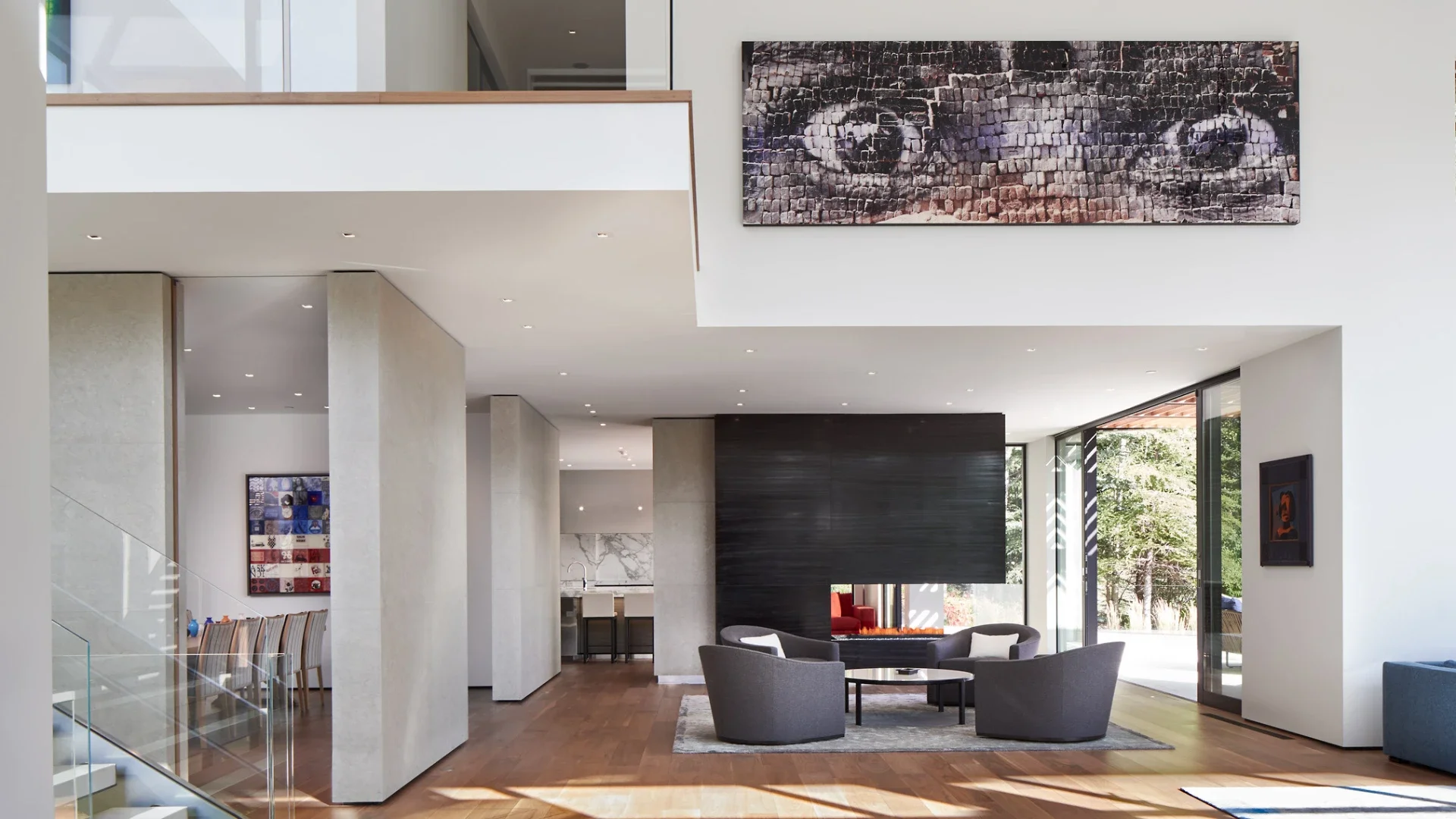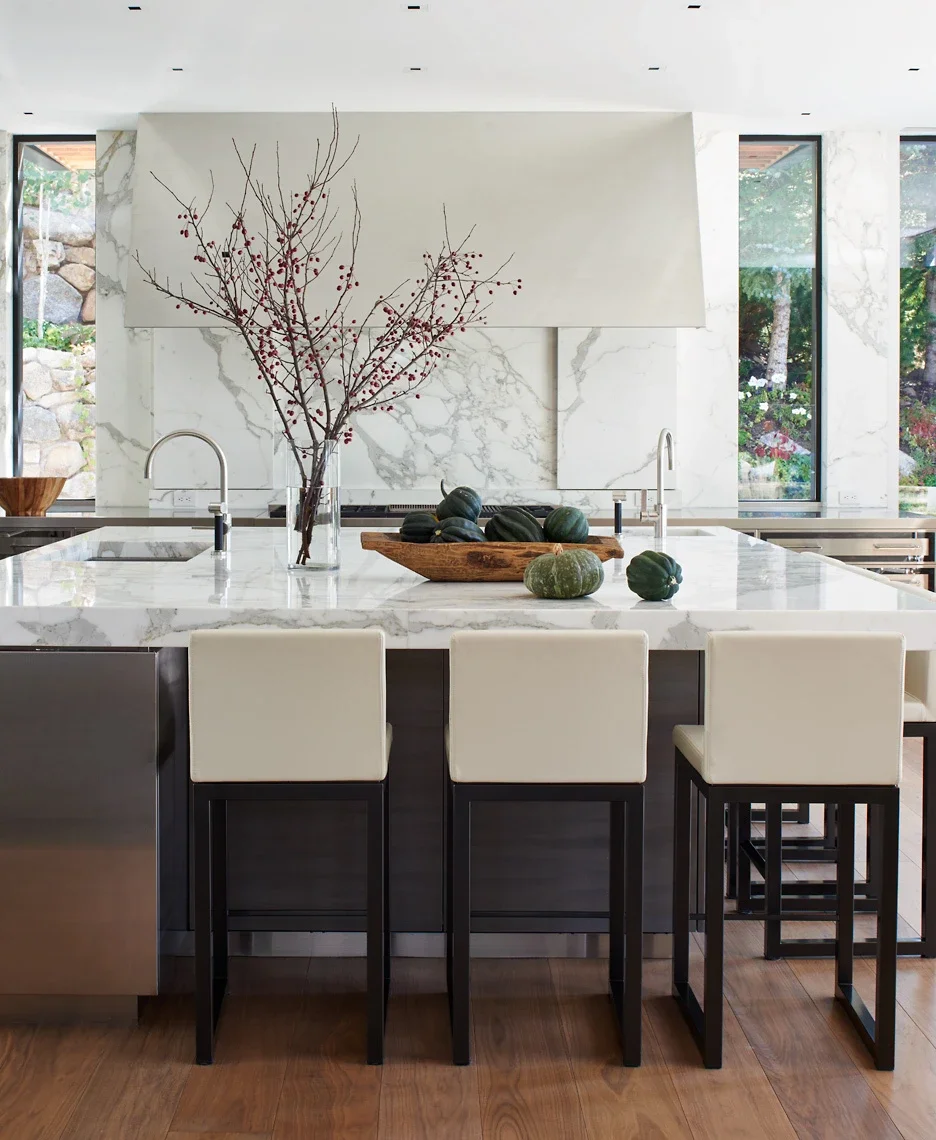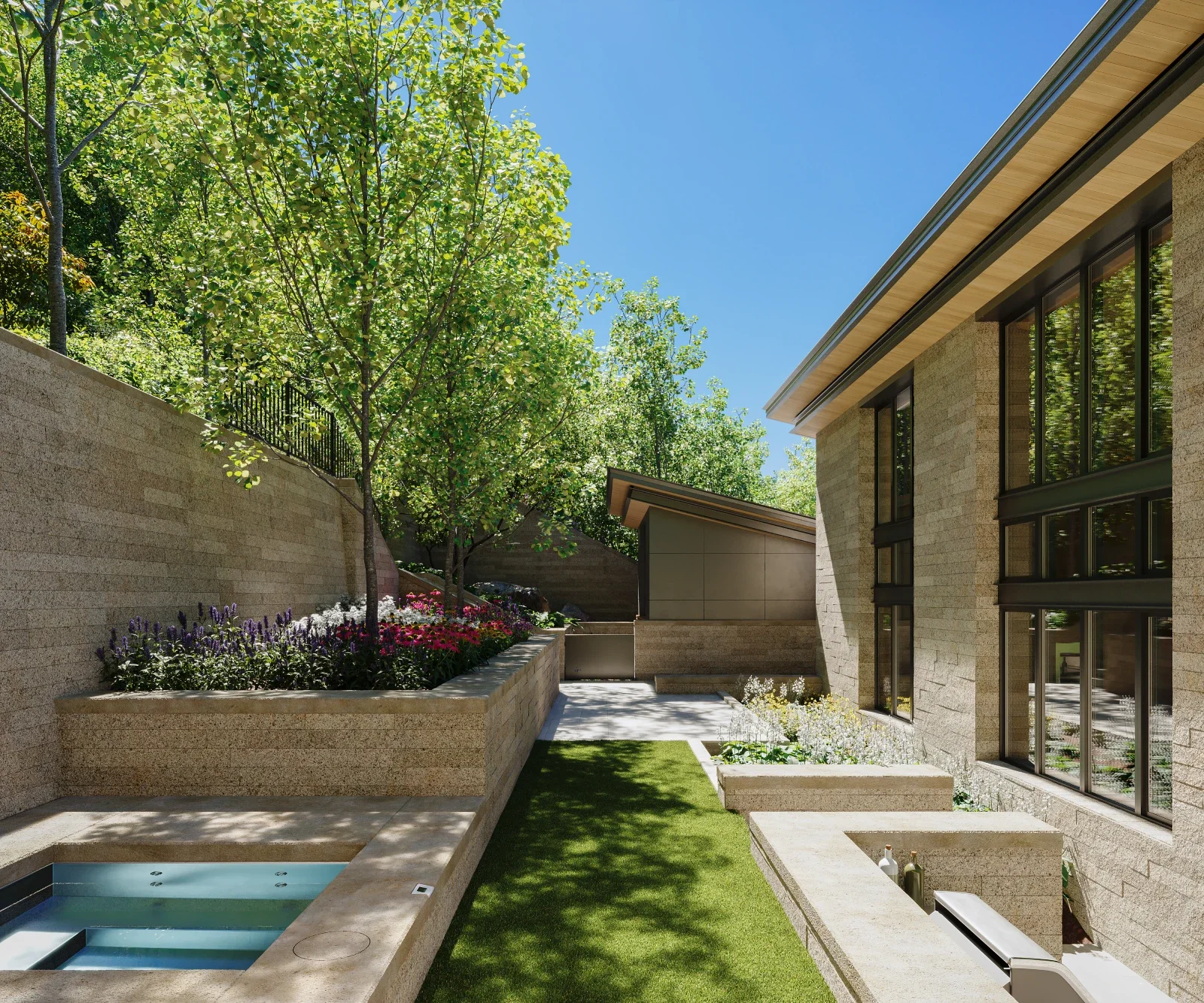Hiring an architect shapes how your home feels, how well it functions, and how confidently you move through the building process. Whether designing from scratch or improving a space you love, knowing when and how to hire an architect makes a difference.
This guide breaks down what we do as architects, why architecture services matter, and how to choose the perfect fit for your goals. If you’re a homeowner ready to start your dream project, discover what to expect and how to navigate the process below.
Why Hiring an Architect Is Worth It
Hiring an architecture firm comes down to strategy, planning, and experience. Before deciding who to hire, it’s essential to understand what we do as architects and how our involvement becomes a valuable resource throughout each step.
What Architects Actually Do
At Poss, we manage both design and logistics. We review your site and needs, then design spaces that support your goals while staying safe and efficient. This includes analyzing sun patterns, topography, views, building codes, and structural demands. We coordinate with engineers, produce permit documents, and work with contractors during construction. Our work adapts to your property’s specific constraints and opportunities. A good architect helps you solve problems before they become expensive to fix.
When You Need an Architect vs When You Don’t
You will likely need an architect if your project involves structural changes, adding new square footage, or working with the city on permits. You may not be able to do smaller updates like flooring or painting. However, even cosmetic projects can benefit from an early architectural review. Clients often discover overlooked details or opportunities once we walk the site. Hiring an architect helps you make wiser long-term decisions.
Benefits of Hiring a Licensed Architect
Licensing protects clients. Architects must complete their education, pass licensing exams, and maintain active certification through continuing education. A licensed professional also carries liability insurance and follows ethical standards. These requirements ensure your architect has the skills and accountability to guide your project responsibly. According to the National Council of Architectural Registration Boards, licensure strengthens public trust and professional quality.
How to Find the Best Architect for Your Project
The right architect combines design ability with clear communication and process. Finding one involves more than checking qualifications. It is also about personal fit and shared expectations.
How to Start: Referrals, Research, and Fit
Start with trusted referrals from builders, friends, or design professionals. Then explore online portfolios and read reviews. Look for projects with design goals similar to yours in style, budget, and complexity. Meeting in person helps assess whether the architect listens well and respects your input. Even the most talented designer may not be right if collaboration feels strained. Trust your instincts as much as the resume.
Interviewing Architects: Key Questions to Ask
Ask how the architect manages projects like yours and how they solve problems when unexpected changes arise. Understand how they estimate timelines and how they break down fees. Clarify who your main contact will be and how often you will meet. A good architect can explain their approach clearly without using jargon. Communication quality during early meetings usually predicts the success of the entire project.
Red Flags and Deal-Breakers to Watch For
Watch for vague timelines, incomplete proposals, or reluctance to answer questions. If an architect avoids discussing cost or downplays complexity, proceed with caution. Also be wary if they show little interest in your goals or site specifics. An experienced professional should ask as many questions as they answer. If you sense shortcuts or rushed responses, it may be a sign to keep looking.
How Much Does It Cost to Hire an Architect?
Cost is one of the first things people ask. While there is no single answer, understanding how fees work helps you confidently budget and avoid misunderstandings. Industry groups like the Royal Architectural Institute of Canada have long published guidance on typical fee ranges and service levels.
Understanding Common Fee Structures
Architects may charge by percentage of construction cost, hourly rate, or a fixed fee. The correct method depends on the project’s size and how involved the architect will be. Percentage-based fees work well for full-service designs. Hourly rates suit short consultations, and fixed fees are often used for early design work or one-time deliverables. The American Institute of Architects has explored ways to improve clarity and transparency in structuring architectural fees. Always confirm what each option includes before signing.
Factors That Affect Architectural Fees
Project complexity, scope, and location all influence cost. A steep hillside site, custom finishes, or strict local codes can add to design hours. The level of involvement also matters. You might pay more for an architect who remains involved through construction but benefits from closer coordination. Costs increase when expectations are unclear or the design changes after work begins. Good planning saves money later.
Cost Comparison Table: Hourly vs Fixed vs Percentage
Here’s a quick comparison of how these fee structures typically work in practice:
| Fee Type | When It’s Used | Typical Range |
|---|---|---|
| Hourly | Consultations or minor revisions | $100–$250 per hour |
| Fixed | Clearly defined scope like schematic plans | Varies by project complexity |
| Percentage | Full design through construction | 8–15% of total construction budget |
Always ask for a breakdown of what the fee covers, including design drawings, meetings, revisions, and site visits.
What to Expect During the Architecture Process
Once hired, your architect becomes a guide from early ideas to completed construction. Understanding the phases helps you prepare and stay engaged.
Project Stages: From Concept to Construction
The process begins with discovery. At Poss, we ask questions about your goals, budget, and site. Next comes schematic design where layout options and visuals are created. Design development refines materials and systems. Then we produce construction documents for permits and builders. During construction, we review progress, answer contractor questions, and help resolve issues as they come up. Each step builds on the last.
Common Contract Terms and What They Mean
Architectural contracts define roles, deliverables, timelines, and billing. You might see terms like schematic design, construction administration, or reimbursable expenses. These are standard. Look for how revisions are handled and how extra services are billed. A good contract prevents confusion later. Always ask for clarification before signing and make sure expectations are aligned. Contracts protect both the client and the architect.
Your Role in the Collaboration
As a client, your timely feedback shapes the outcome. We rely on your input at Poss to make design decisions and keep schedules on track. Your openness about preferences, budget, and concerns builds trust. Delays often happen when decisions stall or expectations change. Be present for key meetings and honest about trade-offs. We also recommend documenting feedback after major design reviews. The process stays efficient and productive when expectations are clear on both sides.
Alternatives to Hiring a Full-Service Architect
While other professionals may offer specific services, only a full-service architect can guide your project from vision to final walkthrough. At Poss, we often meet clients who initially worked with drafters or builders and later realized that gaps in planning led to costly changes. If your project requires site planning, structural coordination, or long-term investment, hiring a licensed architect from the start can prevent issues that emerge later in construction.
Pros and Cons of Designers, Drafters, and Design-Build Firms
Designers focus on interiors, such as finishes, lighting, and furniture, and do not address structural concerns. Drafters can produce technical drawings but do not offer creative input. Design-build firms combine design and construction, which may streamline communication but reduce design flexibility. A licensed architect offers the most complete service if you want creative problem-solving, in-depth site response, and personal guidance.
Expert Advice from POSS Architecture
With decades of experience designing homes in Aspen and beyond, we have seen what makes projects succeed. These are the principles we return to again and again. Poss brings local knowledge and technical fluency that help clients avoid unnecessary delays. Our team understands how to balance design vision with the specific needs of mountain climates, steep sites, and common custom materials in our region.
Key Takeaways for Homeowners Starting a Project
Plan and involve your architect before deciding on budget, land, or contractors. Early engagement avoids conflicts later. Think of your goals as a framework, not a script. Projects evolve. Clarity on function, comfort, and values helps guide choices throughout the process. Our role is to listen and translate those goals into design that works for your life and property.
Why Hiring the Right Architect Matters More Than Ever
As building systems grow more advanced, working with someone who understands performance, safety, and design becomes essential. We help clients evaluate energy codes, coordinate consultants, and track construction details. Good architecture is not only about how something looks. It is about how it functions over time, supports the people living there, and integrates with other disciplines like interior design to create a cohesive environment.
FAQs About Hiring an Architect
What Is the Average Cost of an Architect?
Most charge between eight and fifteen percent of total construction costs, based on service level.
Are Architects Worth the Money?
Yes. Architects improve design quality, reduce construction issues, and align spaces with your goals.
Can Architects Help With Interior Design?
Yes, many do. Poss integrates architecture and interiors as one seamless process. This ensures consistency across lighting, finishes, materials, and spatial flow. Our interior designers work closely with our architects to shape cohesive and livable environments. Instead of treating interiors as an afterthought, we consider every element from the start.
Is It Better to Hire a Local Architect?
Yes, in most cases. Local architects understand permitting, weather, and construction conditions.





